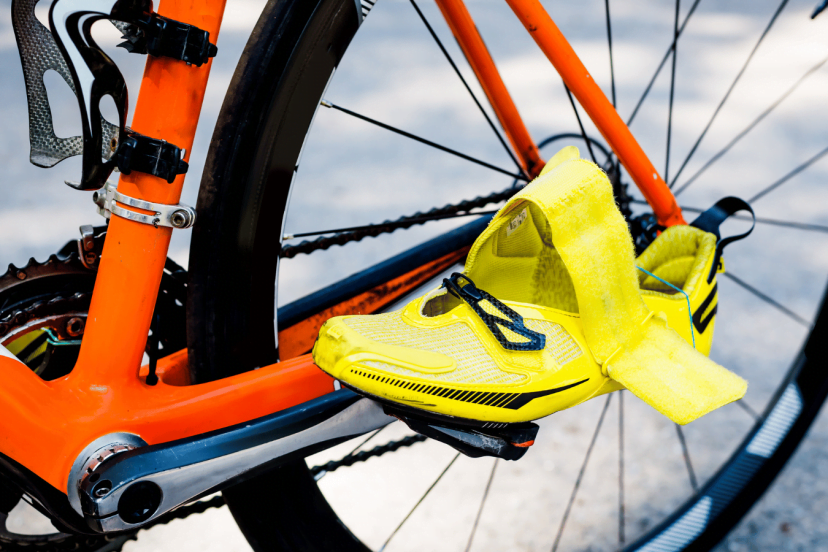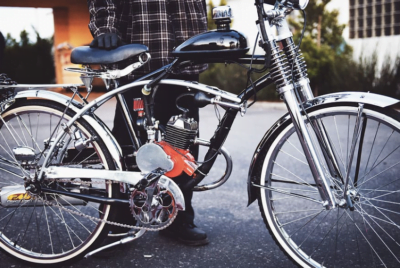Cycling Shoes 101: Everything You Need to Know
Introduction
If you’re passionate about cycling, then having the right equipment is essential for an optimal riding experience. Among the many crucial pieces of gear, cycling shoes play a significant role in enhancing performance, comfort, and safety on the bike. In this comprehensive guide, we’ll delve into the world of shoes, covering everything from their types and features to fit and maintenance. Whether you’re a beginner or a seasoned cyclist, this guide will provide you with valuable insights and tips to help you choose the perfect shoes for your needs.
Table of Contents
- Understanding the Importance
- Different Types
- Key Features to Consider
- Getting the Right Fit
- Caring for Your Cycling Shoes
- FAQs
- Conclusion
Understanding the Importance
Cycling shoes are specifically designed to maximize your pedaling efficiency and improve overall riding performance. Unlike regular athletic shoes, cycling shoes offer a stiff sole that allows for better power transfer from your legs to the pedals. Additionally, they provide a secure and comfortable fit, ensuring optimal foot placement and stability while riding. Whether you’re a road cyclist, mountain biker, or spinning enthusiast, investing in a pair of cycling shoes will greatly enhance your riding experience.
Different Types
When it comes to cycling shoes, there are several types available, each designed for different disciplines and riding styles. Here are some of the most common types:
-
Road Cycling Shoes
– Road cycling shoes are specifically designed for cyclists who spend most of their time on paved roads. These shoes feature a stiff sole for maximum power transfer and often have a lightweight and aerodynamic design. They typically use a three-bolt cleat system that attaches to the pedal, providing a secure connection.
-
Mountain Bike Shoes
– Mountain bike shoes are built to withstand the rigors of off-road riding. They have a more rugged and durable construction compared to road cycling shoes. Mountain bike shoes often feature a recessed cleat system that allows for easy walking and better traction on uneven terrain.
-
Indoor Cycling Shoes
– Indoor cycling shoes, also known as spinning shoes, are designed specifically for indoor cycling classes or using stationary bikes at home. These shoes usually have a two-bolt cleat system and prioritize breathability and comfort over stiffness. They often have a more casual look and feel, resembling athletic sneakers.
-
Commuter Cycling Shoes
– Commuter cycling shoes are designed for cyclists who use their bikes for everyday commuting. These shoes strike a balance between comfort, style, and performance. They often have a more casual appearance, making them suitable for both cycling and walking around town.
-
Triathlon Cycling Shoes
– Triathlon shoes are designed for triathletes and feature a combination of performance and quick transitions. These shoes typically have a lightweight and breathable design, and they often have a wide opening for easy entry and exit during races.
Key Features to Consider
When choosing cycling shoes, several key features should be taken into account to ensure you make the right decision. Here are some essential features to consider:
-
Cleat Compatibility
– Cleat compatibility is an important factor to consider, as it determines the type of pedal system you’ll be using. Different cycling shoe types support different cleat systems, such as the popular SPD, SPD-SL, Look, or Speedplay. Make sure to choose shoes that are compatible with your preferred pedal system.
-
Sole Stiffness
– The sole stiffness of shoes is crucial for maximizing power transfer and efficiency. A stiff sole ensures that minimal energy is lost through flexing, allowing you to transfer more power with each pedal stroke. Road cycling shoes typically have the stiffest soles, while mountain bike shoes may have some degree of flex for off-road traction. Consider your riding style and preferences when selecting the appropriate level of sole stiffness.
-
Closure System
– Cycling shoes feature various closure systems, each offering its own benefits in terms of fit, adjustability, and ease of use. Some common closure systems include:
- Velcro Straps: Velcro straps are simple and easy to adjust, providing a secure fit. They are commonly found on entry-level shoes.
- Ratchet Buckles: Ratchet buckles allow for precise and incremental adjustments, ensuring a snug fit. They are commonly used on mid-range to high-end shoes.
- Boa Lacing System: The Boa system uses a dial to tighten or loosen a thin wire lace, providing a customized fit and even pressure distribution. It offers quick and easy adjustment on the go and is often found on premium shoes.
-
Breathability and Ventilation
– Cycling shoes should offer proper breathability and ventilation to keep your feet cool and dry during long rides. Look for shoes with perforations or mesh panels that promote airflow and moisture wicking. Good ventilation not only enhances comfort but also helps prevent the growth of bacteria and odor inside the shoes.
-
Shoe Weight
– The weight of can have an impact on your overall riding experience. Lighter shoes can contribute to better performance, especially during uphill climbs and accelerations. However, it’s essential to strike a balance between weight and other factors such as durability and comfort. Consider your riding style and preferences when choosing the appropriate shoe weight.
-
Footbed and Arch Support
– Proper support and alignment of your feet are crucial for comfort and preventing potential injuries. Look for shoes that offer adequate arch support and a supportive footbed. Some shoes even have customizable insoles or options for adding orthotics to accommodate different foot shapes and arch heights.
Getting the Right Fit
Achieving the right fit is paramount when it comes to cycling shoes. Ill-fitting shoes can cause discomfort, numbness, and even lead to injuries. Here are some tips to help you get the right fit:
-
Try Before You Buy:
– Visit a local bike shop and try on different brands and models of cycling shoes. Each brand may have slight variations in sizing and fit, so it’s crucial to try them on and walk around to assess their comfort.
-
Toe Space:
– Ensure that there is enough room in the toe box for your toes to wiggle comfortably. You should be able to move your toes without any restrictions.
-
Heel Grip:
– Your heel should fit snugly inside the shoe without slipping. A secure heel grip prevents any unwanted movement and ensures efficient power transfer.
-
Sizing Considerations:
– Pay attention to the sizing chart provided by the manufacturer. Cycling shoe sizes may differ from regular shoe sizes, so measure your feet and refer to the specific brand’s sizing guide.
-
Break-in Period:
– Keep in mind that cycling shoes, especially those made of leather, may require a break-in period to mold to your feet. Be patient and give your shoes some time to adapt.
Caring for Your Cycling Shoes
Proper care and maintenance of your cycling shoes will extend their lifespan and ensure optimal performance. Here are some tips to keep them in excellent condition:
-
Cleaning:
– After each ride, wipe down your shoes with a damp cloth to remove dirt and debris. For more thorough cleaning, use a mild soap or specialized shoe cleaner and a soft brush. Avoid soaking the shoes or using harsh chemicals that can damage the materials.
-
Drying:
– Allow your cycling shoes to air dry naturally after cleaning. Avoid exposing them to direct sunlight or using direct heat sources like hairdryers, as excessive heat can cause the materials to warp or crack.
-
Storage:
– Store your pair in a cool, dry place away from direct sunlight. Avoid placing heavy objects on top of them, as this can deform the shape. Use shoe trees or stuff them with newspaper to help them retain their shape.
-
Cleat Maintenance:
– Regularly inspect the cleats on your shoes for wear and tear. Replace them if they become worn or damaged. Keep the cleat bolts tightened to ensure a secure connection with the pedals.
-
Replacing Parts:
– If any part of your shoes, such as the closure system or insole, becomes worn or damaged, consider replacing them. Many manufacturers offer replacement parts that can extend the life of your shoes.
-
Regular Check-ups:
– Periodically check the overall condition of your shoes, including the sole, upper, and stitching. Early detection of any issues can prevent further damage and prolong the lifespan of your shoes.
Conclusion
Cycling shoes are an essential investment for any cyclist looking to enhance their riding experience. From road cycling to mountain biking and indoor spinning, choosing the right pair of shoes can greatly impact comfort, performance, and safety. By considering factors such as cleat compatibility, sole stiffness, closure systems, and fit, you can find the perfect pair for your needs.
Remember to properly care for your cycling shoes by cleaning them regularly, allowing them to dry naturally, and storing them in a cool, dry place. Additionally, keep an eye on the condition of your shoes and replace any worn or damaged parts as needed. By taking these steps, you can extend the lifespan of your shoes and maintain their optimal performance.
Whether you’re a beginner or an experienced cyclist, this guide has provided you with the necessary knowledge to navigate the world of cycling shoes. Now, armed with this information, you can confidently choose the right pair of shoes to maximize your riding potential and enjoy the journey to the fullest.
FAQs
-
How do I determine my shoe size?
– It’s recommended to refer to the specific sizing chart provided by the manufacturer. Measure the length and width of your feet and compare them to the size guide to find the most accurate fit.
-
Can I use regular athletic shoes for cycling?
– While you can technically use regular athletic shoes for cycling, they are not ideal for optimal performance. Cycling shoes provide a stiff sole and a secure connection with the pedals, which improves power transfer and efficiency.
-
Do I need to use cleats with cycling shoes?
– Cleats are necessary for most cycling shoes as they attach to the pedal and provide a secure connection. The type of cleats depends on the pedal system you use, such as SPD, SPD-SL, or Look.
-
How should cycling shoes fit?
– Cycling shoes should fit snugly but not too tight. Your toes should have some wiggle room, and your heel should be secure without slipping. Avoid any areas of pressure or discomfort.
-
How often should I replace?
– The lifespan varies depending on usage, care, and materials. On average, they can last between 1,500 to 3,000 miles or 2-3 years. However, if you notice significant wear, discomfort, or damage, it may be time to replace them.
-
Can I use cycling shoes for other activities?
– While they are designed specifically for cycling, some types, such as commuter shoes, can be versatile enough for walking and other activities. However, it’s best to use dedicated athletic shoes for other sports or activities.



